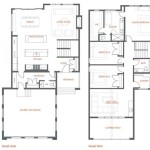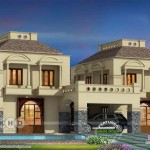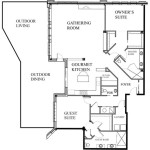Essential Aspects of House Plans Colonial Style Homes
Colonial style homes are characterized by their classic and timeless designs, which have stood the test of time for centuries. If you're planning to build a new home or renovate an existing one, incorporating Colonial style elements can add charm and historical character to your property.
Features of Colonial Style Homes
Colonial style homes typically feature the following characteristics:
- Symmetrical facade with a central doorway and windows on either side
- Gabled or hipped roof with dormer windows
- White or light-colored exterior with brick or stone accents
- Multi-pane windows with shutters
- Emphasis on natural light
- Wide porches and exterior railings
- Formal interior layouts with central hallways and fireplaces
Types of Colonial Style Homes
There are several different types of Colonial style homes, each with its own unique characteristics:
- Georgian Colonial: Grand and symmetrical, with a high-pitched roof and Palladian windows
- Federal Colonial: Elegant and refined, with low-pitched roofs and delicate ornamentation
- Cape Cod Colonial: Quaint and cozy, with a steep roof and a central chimney
- Saltbox Colonial: Asymmetrical, with a long, sloping roof on one side
Benefits of Colonial Style Homes
Choosing a Colonial style home offers numerous benefits:
- Timeless Appeal: Colonial style homes have a timeless appeal that never goes out of style
- Historical Charm: They evoke the charm and elegance of a bygone era
- Versatile Designs: Colonial style homes can be adapted to various lot sizes and styles
- Efficient Layouts: Their symmetrical floor plans maximize natural light and create a comfortable living experience
Planning a Colonial Style Home
When planning a Colonial style home, consider the following:
- Study House Plans: Research different house plans to determine the style and size that best suits your needs
- Choose a Location: Colonial style homes look best in neighborhoods with mature landscaping and wide streets
- Select Materials: Choose materials that are appropriate for the historical period you're replicating
- Hire a Contractor: Work with an experienced contractor who specializes in Colonial style homes to ensure authenticity and quality
By incorporating these essential aspects into your house plans, you can create a stunning Colonial style home that will provide you with years of comfort and enjoyment.

7 Tiny But Gorgeous Colonial Homes Style House Plans

Colonial House Plans Floor Modern Thd

Colonial House Plans Southern Floor

Dutch Colonial Home A Few Modifications To Open The Kitchen Dining Room And Create An Upstairs En House Plans 1920s Homes

Colonial House Plan With 3 Bedrooms And 2 5 Baths 6990

Colonial House Plans Southern Floor

1930 Practical Homes Colonial House Plans Dutch

Colonial Floor Plan 4 Bedrms 5 Baths 3435 Sq Ft 102 1050

Colonial Style House Plans Floor Designs Houseplans Com

Plans Two Story Modular Homes Colonial House New England Home








